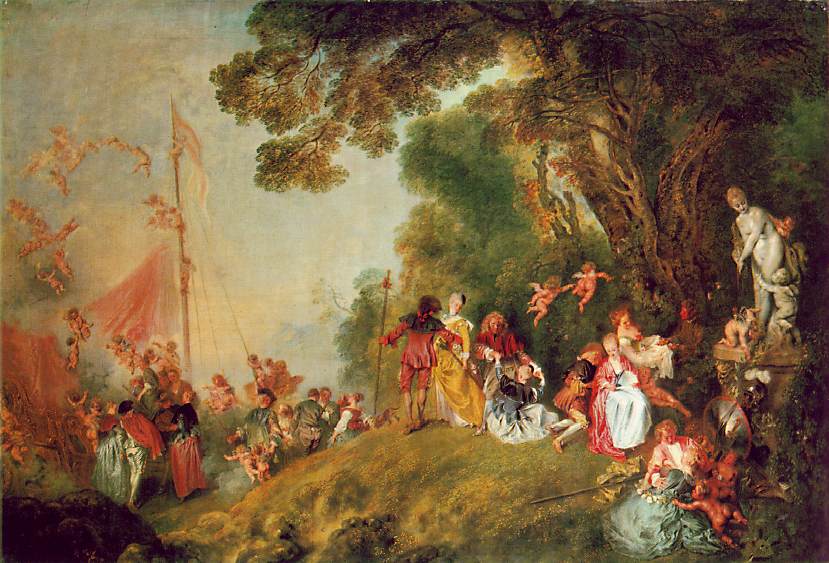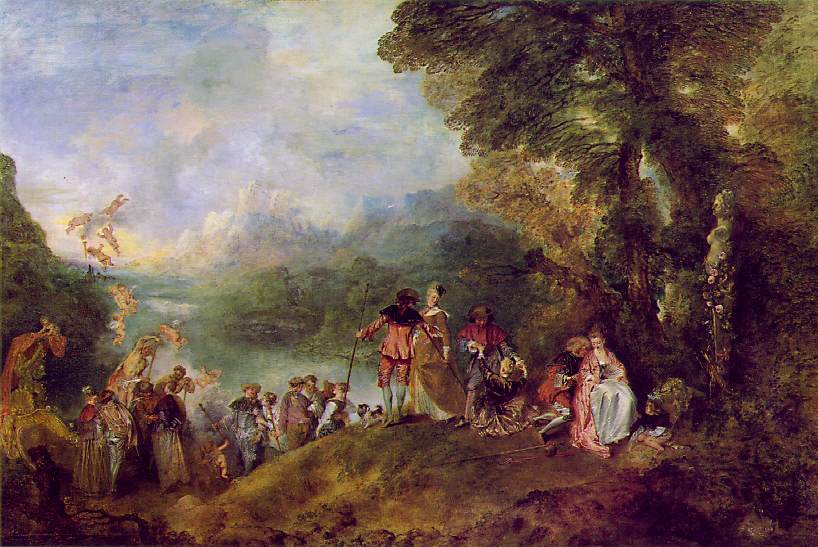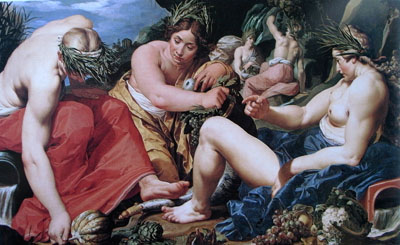 |
| Pilgrimage to Cythera |
In the 18th century Jean-Antonie Watteau was unappreciated for his talent, painting fete galante scenes. This kind of painting was different from the average mythological or history painting that many artists were creating at this time. Fete galante paintings were of scenes that depict aristocrats enjoying the great outdoors. One of his paintings that caught my eye was the Pilgrimage to Cythera .
 |
| Embarkation for Cythera |
The painting of the Pilgrimage to Cythera captures the essence of fete galante. Though usually this kind of painting has ambiguous subject matter since facial expression are hard to interpret. The painting of the Pilgrimage to Cythera is a romantic and idealized scene of men and women in fancy costumes; Watteau was inspired by theatre which showed in his art. The Pilgrimage to Cythera caught my attention because it is very similar to the Embarkation to Cythera , the painting Watteau submitted to Academy which resulted in the creation of fete galante category of painting.
Cythera is an island off the coast of Greece Cythera or if they are leaving. After viewing each of the paintings, I realized that many of the couples in the Pilgrimage are the same couples in the Embarkation, there are only slight differences. Most of the differences are within the landscape. In the first painting, the landscape appears very close; there is not a lot of atmospheric perspective giving illusion to depth within the painting that is seen in the Embarkation painting. In the Pilgrimage painting there is part of a ship visible, which is not present in the other version. Also there are many more putti, cupid, flying around in the painting of the Pilgrimage to Cythera . In each painting there is a statue of Venus on the right, each of them are very different. The first painting shows the entire statue of Venus with cupid holding onto her leg. In the painting that Watteau submitted to the Academy has a much smaller statue which only depicts Venus’ bust; the rest of the statue is covered with flowers. The colors used in each painting are very different, in the first painting the colors are vibrant, and cheerful which gives the painting a completely different feeling from the other painting. In the second painting the colors are more subdued, and dark. Though there are about the same number of people in each painting there seems to be more going on in the painting of the Pilgrimage.
It is unclear who the patron was for the Pilgrimage to Cythera . I did read that Watteau recreated the painting to produce the Embarkation to Cythera which he submitted to the Academy. Unfortunately, Jean-Antonie Watteau suffered from tuberculosis which leads to his death on July 18th, 1721; he was only 37 when he died.
The Pilgrimage to Cythera is an interesting painting of elegantly dressed men and women searching for love on the island of Cythera Cythera paintings are of “impossible dreams, the revenge of madness on reason and of freedom on moral rules.”
My resources were:





